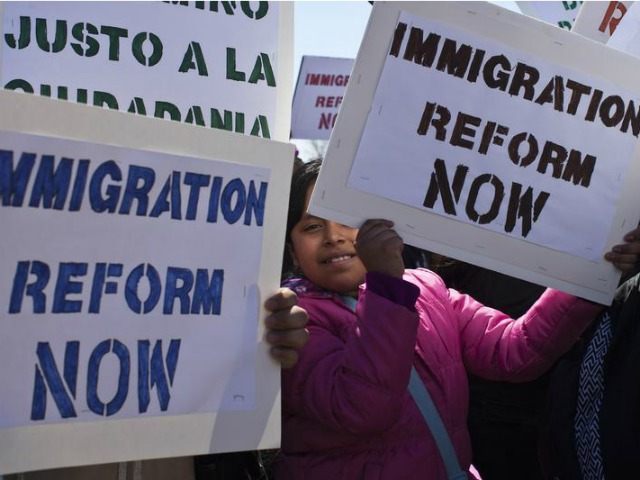In the coming decades, immigrants and their direct descendants will account for 103 million people, or 88 percent of U.S. population growth. That would have an impact on both the size of the U.S. and its demographic make up, according to new projections from the Pew Research Center.
The report, released Monday, reveals the extent to which the passage of the Immigration and Nationality Act in 1965 has altered U.S. demographics from a system based on quotas resulting in more European immigrants to one which opened the America’s doors to large numbers of immigrants from Latin America, Asia, and elsewhere.
According to Pew, since 1965 more than half of immigrants (51 percent) to the U.S. have been from Latin America and a quarter have been from Asia. From the mid-1800s through the early 1990s immigrants, Pew notes, were almost all from Europe.
Not only were immigrants prior to the 1965 INA largely European, they also arrived in smaller numbers. Pew reports that in nearly 80 years between 1840 and 1919, about 32.5 million — mostly European — immigrants arrived in the U.S. Meanwhile in the 50 years following the INA, 1965 to 2015, about 59 million immigrants — largely from Latin America and Asia — arrived in the U.S.
“As a result of its changed makeup and rapid growth, new immigration since 1965 has altered the nation’s racial and ethnic composition,” the Pew analysis reads. “In 1965, 84% of Americans were non-Hispanic whites. By 2015, that share had declined to 62%. Meanwhile, the Hispanic share of the U.S. population rose from 4% in 1965 to 18% in 2015. Asians also saw their share rise, from less than 1% in 1965 to 6% in 2015.”
Had there not been any immigration after 1965, Pew estimates that today, 75 percent of the U.S. population would be white, 14 percent would be black, 8 percent Hispanic and 1 percent Asian.
Pew’s projections in the coming 50 years suggest that by 2065 the U.S. will be host to 78 million immigrants and the foreign-born population will hit a record 18 percent of the U.S. population. Currently 14 percent of the U.S. is foreign-born. Additionally, the U.S. is home to one in five of the world’s immigrants and the immigrant population in the U.S. is “by far,” according to Pew, the world’s largest.
The report further estimates that by 2065, there will not be a racial majority in the U.S.
“Non-Hispanic whites are projected to become less than half of the U.S. population by 2055 and 46% by 2065,” the report reads. “No racial or ethnic group will constitute a majority of the U.S. population. Meanwhile, Hispanics will see their population share rise to 24% by 2065 from 18% today, while Asians will see their share rise to 14% by 2065 from 6% today.”
With the nation’s demographics experiencing significant shifts, Pew’s public opinion polls on the matter are mixed but more negative on immigration from Latin America and the Middle East, more neutral on immigration from Africa and more positive on immigration from Asia and Europe.
Further, two-thirds of American adults also believe immigrants to the U.S. are not assimilating. Additionally half think immigrants are making the economy and crime worse in the U.S.
“The same survey finds that half of Americans want to see immigration to the U.S. reduced (49%), and eight-in-ten (82%) say the U.S. immigration system either needs major changes or it needs to be completely rebuilt,” Pew reports.

COMMENTS
Please let us know if you're having issues with commenting.